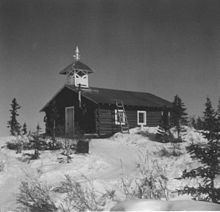Country United States Census Area Yukon-Koyukuk FIPS code 02-03990 Zip code 99722 | Time zone Alaska (AKST) (UTC-9) Population 152 (2000) Area code 907 | |
 | ||
Area 180.8 km² (159.8 km² Land / 20.98 km² Water) | ||
Landing in arctic village alaska
Arctic Village (Vashrąįį K’ǫǫ in Gwich’in) is an unincorporated Native American village and a census-designated place (CDP) in Yukon-Koyukuk Census Area, Alaska, United States. As of the 2000 census, the population of the CDP was 152. The village is located in the large Gwitch'in speaking region of Alaska, and the local dialect is known as Di'haii Gwitch'in or Kutchin. As of 1999, over 95% of the community speaks and understands the language. (Kraus, 1999)
Contents
- Landing in arctic village alaska
- Map of Arctic Village AK USA
- History
- Geography
- Demographics
- Education
- Literature
- References
Map of Arctic Village, AK, USA
History
Evidence from archaeological investigations indicate that the Arctic Village area may have been settled as early as 4500 BC. Around 500 AD the Athabascan speaking Gwich’in people (often called Neets'aii Gwich'in or “those who dwell to the north”) came into the area with seasonal hunting and fishing camps. About 1900, the village became a permanent settlement.
Geography
Arctic Village is located at 68°7′19″N 145°31′40″W (68.121828, -145.527686), on the east fork of the Chandalar River, about a hundred miles north of Fort Yukon. The area consists of flat floodlands near the river, but is mostly wooded hills.
Both the CDP and the "village" have the same total area, 69.9 square miles (181 km2), of which, 61.71 square miles (159.8 km2) is land and 8.12 square miles (21.0 km2) (11.63%) is water.
Demographics
As of the census of 2000, there were 152 people, 52 households, and 30 families residing in the CDP. The population density was 2.5 people per square mile (1.0/km²). There were 67 housing units at an average density of 1.1/sq mi (0.4/km²). The racial makeup of the CDP was 7.89% White, 86.18% Native American, and 5.92% from two or more races. 0.66% of the population were Hispanic or Latino of any race.
There were 52 households out of which 44.2% had children under the age of 18 living with them, 25.0% were married couples living together, 21.2% had a female householder with no husband present, and 40.4% were non-families. 32.7% of all households were made up of individuals and 3.8% had someone living alone who was 65 years of age or older. The average household size was 2.92 and the average family size was 3.58.
In the CDP, the population was spread out with 41.4% under the age of 18, 9.9% from 18 to 24, 28.9% from 25 to 44, 17.8% from 45 to 64, and 2.0% who were 65 years of age or older. The median age was 24 years. For every 100 females there were 114.1 males. For every 100 females age 18 and over, there were 128.2 males.
The median income for a household in the CDP was $20,250, and the median income for a family was $19,000. Males had a median income of $21,875 versus $10,000 for females. The per capita income for the CDP was $10,761. About 30.8% of families and 46.3% of the population were below the poverty line, including 53.1% of those under the age of eighteen and none of those sixty five or over.
Education
Yukon Flats School District operates the Arctic Village School.
